Animals Teaching Resources
Explore animal life in your science classroom with printable worksheets, classroom posters, and more teaching resources all about the different types of animals, their life cycles, characteristics and more!
This teacher-created collection includes a series of animal-focused teacher resources covering reptiles, birds, fish, mammals, and amphibians plus resources that classify a selection of vertebrates and invertebrates!
This comprehensive collection of teaching resources includes editable curriculum-aligned lessons on wildlife, endangered species and more — all ready to be printed and used in the classroom!
New to teaching this section of the science curriculum or looking for some fresh ideas? Read on for some tips on teaching about animal classification from our teacher team!
What Is Animal Classification? A Kid-Friendly Definition
In science class (and in professional study) animals are classified into groups based on physical and genetic characteristics. Scientists use a classification system called the Linnaean system to group different animals into progressively more specific categories, starting with the largest (and most inclusive group) and ending with the smallest and most specific group.
The categories are:
- Kingdom
- Phylum
- Class
- Order
- Family
- Genus
- Species
Helping students to remember these categories of biological animal classification, you might want to use a mnemonic such as:
- King Philip came over from Germany swimming.
- King Philip came over for good spaghetti.
- King Philip came over for good soup.
Sometimes the word "domain" is added to the top of the animal classification list, and in those cases you can add the word "dear" to your mnemonic sentences to help your students recall them all.
In the Linnaean system, every animal in nature is assigned a unique scientific name. The name includes their genus and species and it's used globally to refer to that animal — so, for example, a dog is a dog, but it's also a "canis lupus familiarise" according to its scientific name.
The animal classification system is used all around the world to help scientists understand the relationships between different animals and how they evolved over time.
Teaching About Animal Classification in Elementary School
How in-depth should your lesson planning be for animal classification? In the elementary grades, learning classifications of animals sets the stage for understanding how important this system is when scientists are studying animals in the natural world.
Consider this: In elementary school, students typically learn about the basic categories of animal classification, such as mammals, birds, fish, reptiles, and amphibians.
Your animal classification lessons can extend into learning about specific examples of animals within each category, such as lions and elephants for mammals, and eagles and penguins for birds.
By the time they head off to high school, students should already know the characteristics that define each group — such as the presence of fur or feathers (in birds) or most mammals' ability to give birth to live young. Students should also know about the classification of animals within each group, such as the different types of mammals or birds.
Ready to get started? Explore the resources in this collection!
- Plus Plan
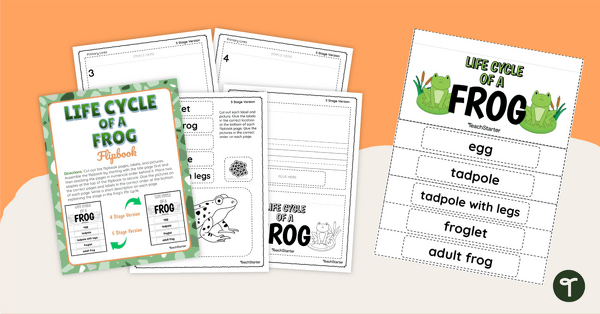
Life Cycle of a Frog Flipbook
Sequence the stages of a frog’s life cycle with this printable flipbook.
- Plus Plan
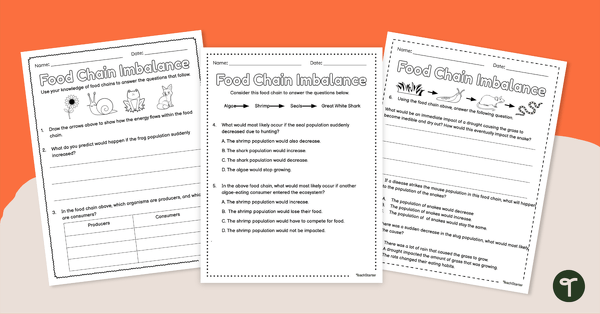
Food Chain Imbalance – Worksheet
Predict how changes in a food chain affect species in an ecosystem with this worksheet.
- Free Plan
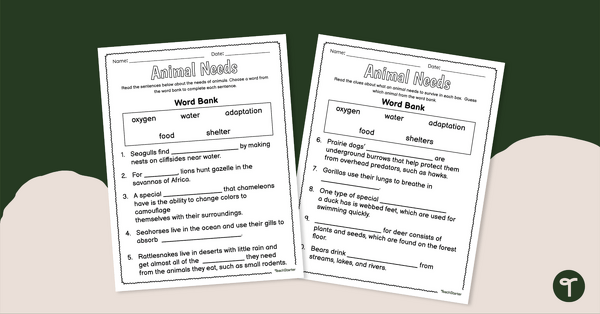
Animal Needs – Worksheet
Practice and review vocabulary associated with basic animal needs with this worksheet.
- Plus Plan
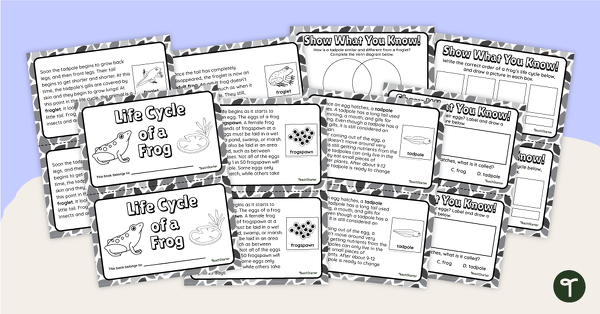
Life Cycle of a Frog – Mini-Book
Read and learn about the life cycle of a frog with this informational reader and activity booklet.
- Plus Plan
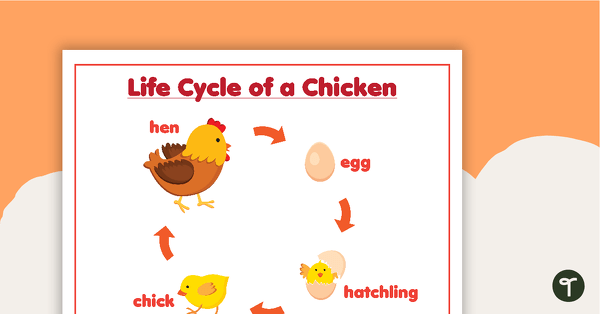
Life Cycle of a Chicken Poster
Teach your students about the life cycle of a chicken with this colorful classroom poster perfect for early years science lessons.
- Plus Plan
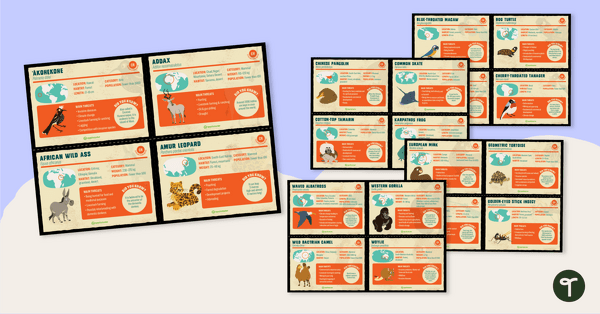
Endangered Species Fact Cards
Explore 64 species and subspecies that are on the critically endangered list with this set of fact cards.
- Plus Plan
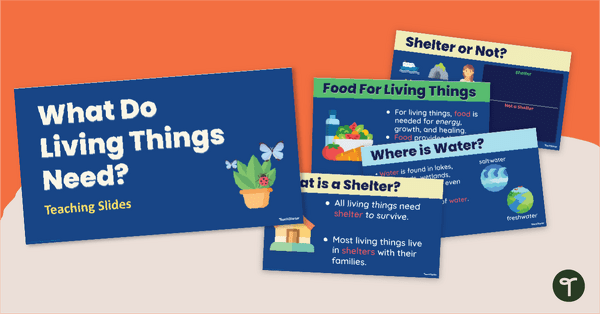
What Living Things Need to Survive - Teaching Slides
Teach your students what animals, plants, and humans need to survive with an engaging, interactive teaching slide deck.
- Plus Plan

Pets and Their Needs - Worksheet
A worksheet for students to identify the four basic needs of living things.
- Plus Plan
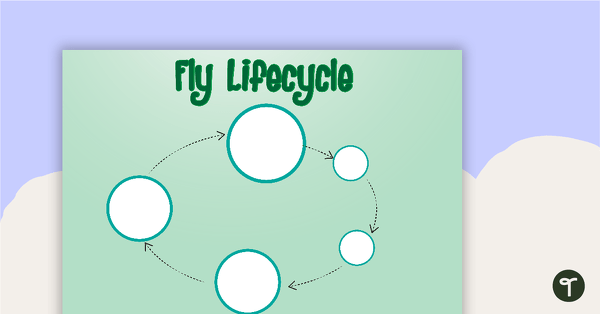
Fly Life Cycle Sort Activity
Help your students concrete their understanding of the fly life cycle with this interactive game.
- Plus Plan
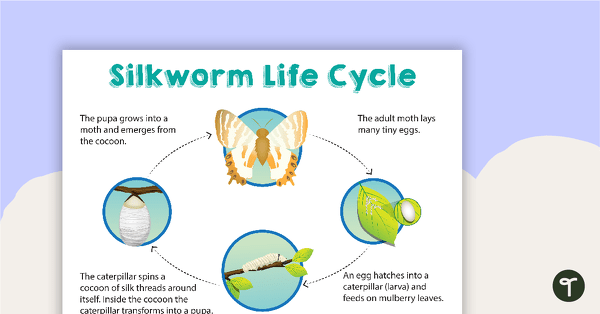
Silkworm Life Cycle Poster
An educational poster displaying the life cycle stages of a silkworm.
- Plus Plan
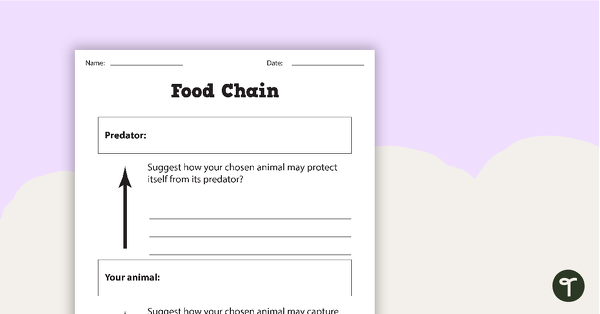
Basic Food Chain Worksheet
A basic food chain worksheet for your students to complete.
- Plus Plan

Pets and Their Needs Teaching Slides
Teach your students about the needs of living things with an engaging interactive slide deck about pets and their needs.
- Plus Plan

Is It An Insect? Classification Chart Pack
Help your students differentiate between insects and arachnids, plus other creepy crawlies with a printable Insect Identification chart.
- Plus Plan
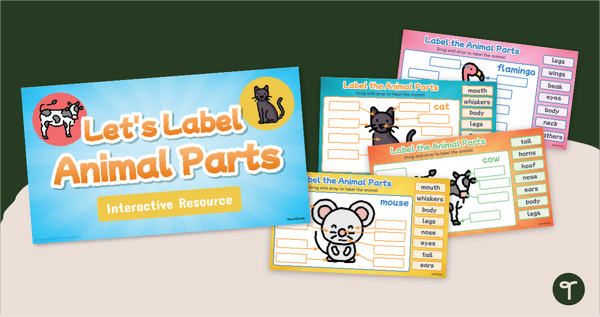
Parts of an Animal Labeling Activity - Digital Learning Resource
Identify and label animal body parts with an interactive labeling activity for preschoolers.
- Plus Plan

Winter Survival Adaptations - Sorting Activity
Match the animals with the behavioral adaptation that helps them survive the winter in this printable animal adaptation sorting activity.
- Plus Plan

Inherited vs. Acquired Traits Bingo Game
Understand the difference between inherited and acquired traits by playing a few rounds of Inherited vs. Acquired Traits Bingo!
- Plus Plan
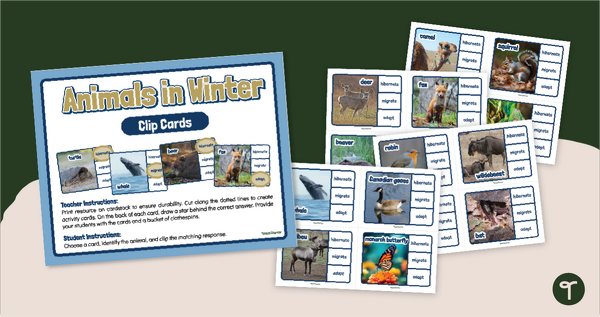
Winter Animal Adaptations - Clip Cards
Discover which behavioral adaptations animals use to survive the winter with a set of Animals in Winter Clip Cards.
- Plus Plan

Nocturnal Animals Activities for Preschool & Kindergarten
Introduce your students to the creatures of the night with five nocturnal animal activities for kids!
- Plus Plan
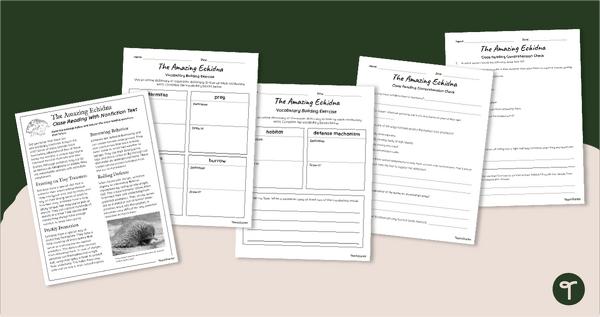
Echidna Adaptations – Reading Worksheet Pack
Discover the adaptations of the echidna with a printable reading passage and comprehension worksheet pack.
- Plus Plan
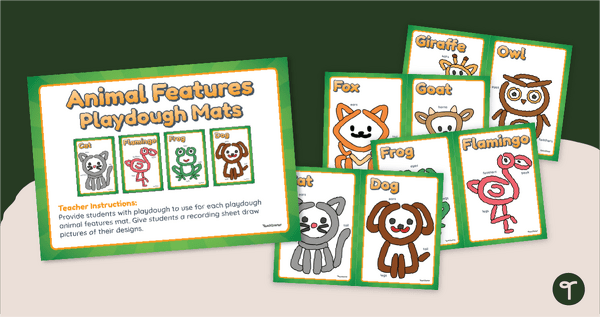
Animal Features Playdough Mats
Use our Animal Playdough Mats to introduce your kindergarten students to the physical features of animals.
- Plus Plan
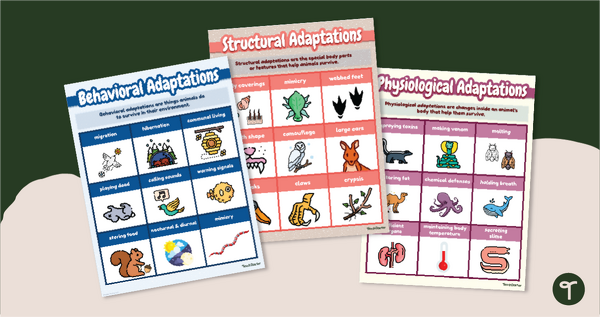
Animal Adaptation Examples – Anchor Chart Set
Help your students identify physiological, behavioral, and structural adaptations with printable Examples of Adaptations Anchor Charts.
- Plus Plan

Poison Dart Frog Adaptations – 4th Grade Reading Worksheets
Explore the adaptations of a poison dart frog with printable reading comprehension worksheets for 4th grade.
- Plus Plan
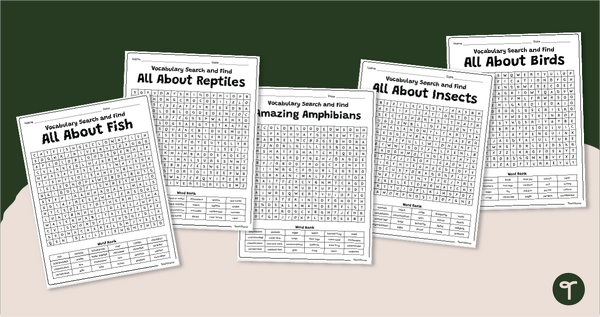
Animal Classes Word Search Pack - Upper Grades
Review vocabulary related to animal classes and characteristics of animals with a pack of printable animal classification word searches.
- Plus Plan
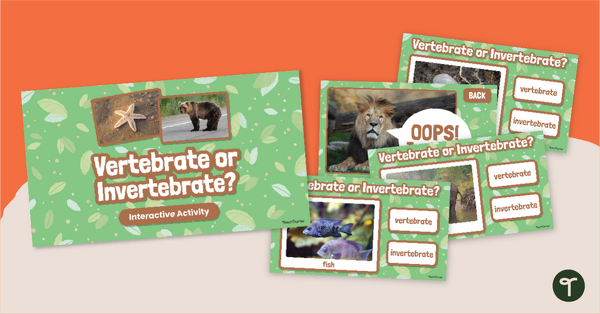
Vertebrate or Invertebrate? Game
Have fun classifying vertebrates and invertebrates with an exciting Google Slides Interactive Science Game!
- Plus Plan
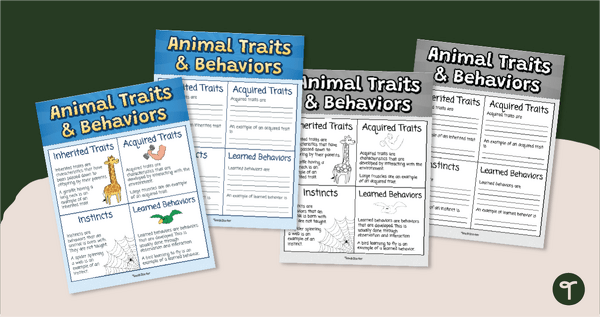
Animal Traits and Behaviors Anchor Charts
Help your students differentiate between inherited and acquired traits, instincts, and learned behaviors with a printable science anchor chart and note-taking organizer.
- Plus Plan
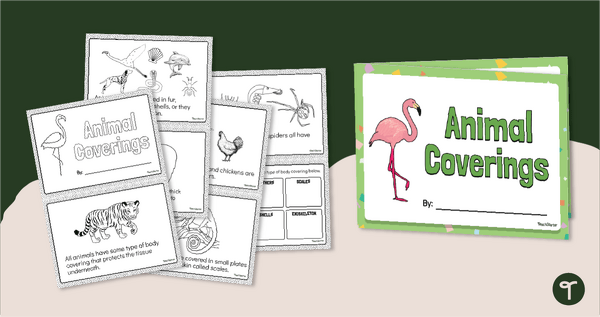
Animal Body Coverings Mini Book
Read and learn about the characteristics of animals with a printable Animal Body Coverings Mini Book.
- Plus Plan
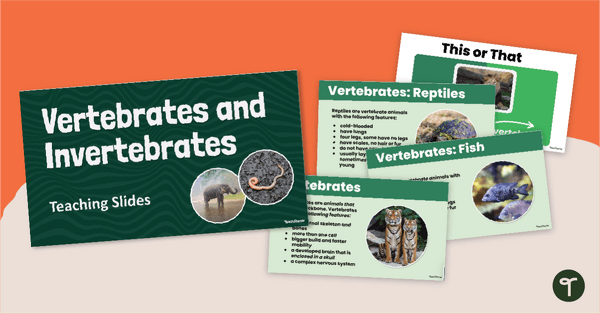
Vertebrates and Invertebrates Teaching Slides
Teach your students about the characteristics of vertebrates and invertebrates with an interactive teaching slide presentation.
- Plus Plan
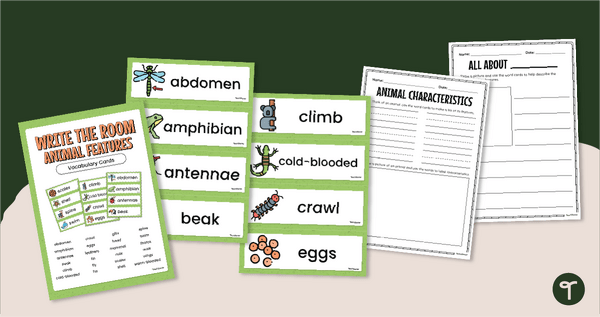
Animal Characteristics - Write the Room Activity
Help your young students read and write about features of animals with a printable Animal Characteristics Write the Room activity.
- Plus Plan

Polar Bear Craft Template
Pair a polar bear craft and informational writing to create a fun winter animals bulletin board.
- Plus Plan
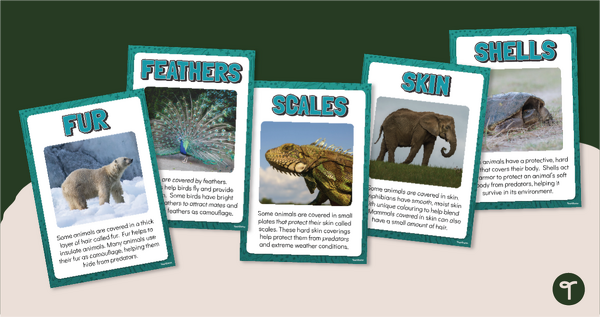
Animal Body Coverings Poster Set
Discover the different animal body coverings (feathers, fur, scales, skin and shells) with a set of printable posters.
- Plus Plan
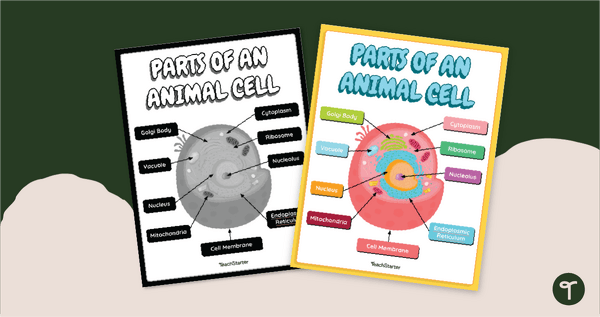
Labeled Animal Cell Model Poster
Highlight the different parts of an animal cell with a labeled animal cell diagram.
- Plus Plan
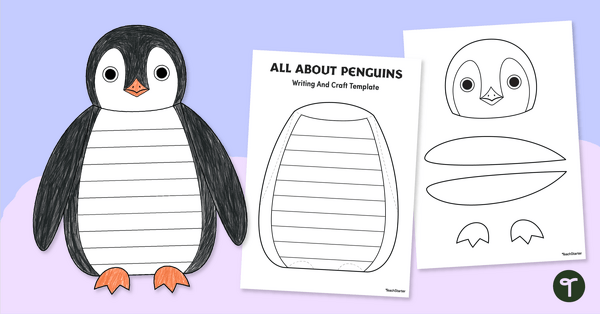
Penguin Craft & Writing Template
Research and write about penguins and their adaptations, then create a fun penguin craft to display student work.